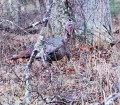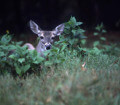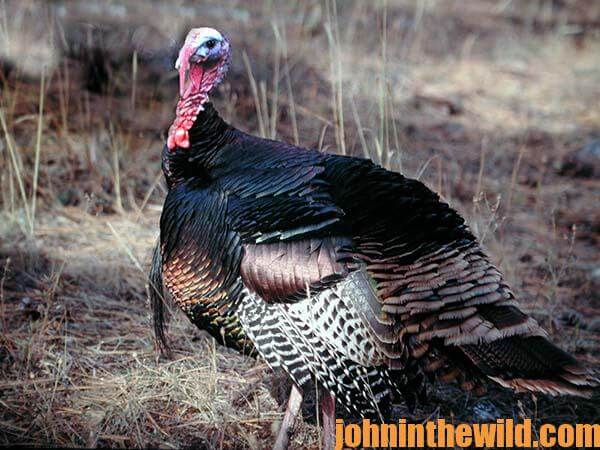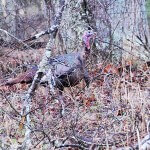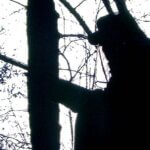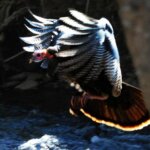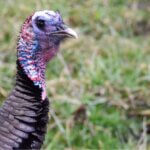John’s Note: The late Billy Macoy of Lineville, Alabama, was a renowned, relentless turkey hunter. Some of the most interesting turkey hunts I’ve ever been on were with Macoy.
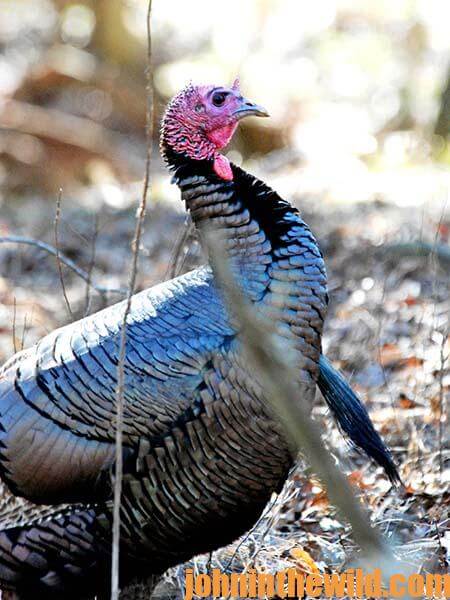 When I looked at my watch as the gobbler first walked behind the palmettos, the time was 7:55 am.
When I looked at my watch as the gobbler first walked behind the palmettos, the time was 7:55 am.
The bird had been right there at us all that time, with my watch now reading 8:20 am. I felt as though a lifetime had passed by. The bronze swamp baron was still drumming and strutting when I heard a rustle in the leaves behind me. “Now what’s Billy doing”? I asked myself. “Does he want me to turn around while he points out an area where he wants me to move? I can’t move, because if I do, the turkey will see me. If Billy moves, he may be able to get a shot at the turkey that I can’t get. Whatever Billy’s doing, he’ll just have to do it. And, whatever happens will happen. But I’m not going to move, and I’m not about to shoot until the turkey comes out from the palmettos.”
Ever since we had first made voice contact with the turkey, Macoy had been using a diaphragm caller. The mouth yelper had pulled the bird in to within 12 yards of me. The turkey was doing everything he was supposed to do. By strutting and drumming, the ole gobbler should have been able to make his lady friend walk around the blind to meet him. There was no reason for him to come from behind the blind. The hen should have gone to him since that was the natural order of things. But she had not come, and nothing he could do – including flaunting his manhood – would entice that coy wench to move from behind those palmettos and meet him.
 As soon as Macoy began to call, I knew what the rustling in the leaves meant.
As soon as Macoy began to call, I knew what the rustling in the leaves meant.
The change in the sound of Macoy’s calling revealed that he had switched from the diaphragm caller to a slate call. Macoy told me later, “I always carry at least three calls with me – a diaphragm, the call in which I have the most confidence, a slate for clucking and purring and a box to use when all else fails. Many times when a bird hangs up, you’ll be able to pull the turkey on into gun range if the sportsman will change calls. And Macoy’s soft clucking and purring on the slate really seemed to set the gobbler on fire. Every time the cedar peg crossed the slate rock, the turkey gobbled or double gobbled. I saw his ivory head moving toward the end of the palmetto blind. My head was down, my cheek was against the stock, and my gun was aimed at the spot where the bronze baron should appear.
The morning mist had dissipated. Now the bright, harsh rays of the new day’s sun illuminated the spot where the turkey should appear. Finally, the ole bird came into the killing ground. As the sun sifted through his feathers, the beautiful hues of green, bronze, black, purple and brown lit up like iridescent paint when black light stroked it. I squeezed the trigger on my shotgun, and the bird was thrown skyward. Because I had been sitting in a cramped position for over 45 minutes, I was slow to get up. However Macoy, the agile woodsman that he was, was on a dead run once the shotgun cracked. He covered the bird like a pointer retrieving a bobwhite. As we sat there later – finally able to swat mosquitoes – the two of us discussed the long waiting period we both had endured. “I was praying you would hold your shot,” Macoy said. “And I was hoping you would keep on calling,” I explained.
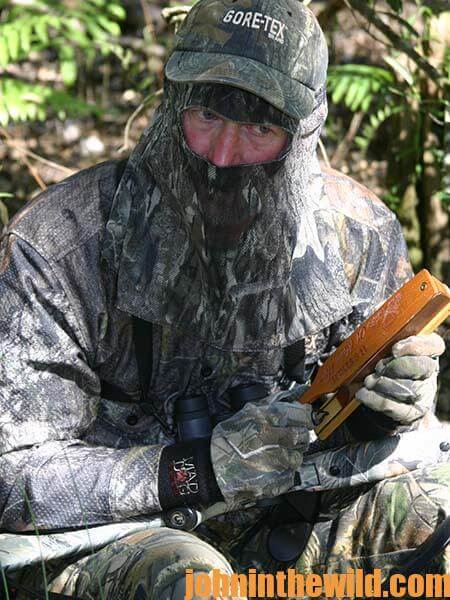 “John, let’s see just how close that bird was to you before you shot,” Macoy said with a big smile on his face. Macoy paced off the distance from the downed turkey to the tree where I was seated. “18 steps,” he reported. “Wait a minute,” I answered. “That’s where the turkey landed after he had been shot.” I walked to the corner of the palmetto blind that the turkey had waked around. “This is where the ole bird was standing when I shot him,” I told Macoy.
“John, let’s see just how close that bird was to you before you shot,” Macoy said with a big smile on his face. Macoy paced off the distance from the downed turkey to the tree where I was seated. “18 steps,” he reported. “Wait a minute,” I answered. “That’s where the turkey landed after he had been shot.” I walked to the corner of the palmetto blind that the turkey had waked around. “This is where the ole bird was standing when I shot him,” I told Macoy.
Once again, Billy paced off the distance from where the bird took lead to the base of the tree where I had been standing and announced, “10 steps.” We looked in the leaves behind the blind and saw where the bird had been dragging his wings when he was strutting. “There’s only one thing wrong with this hunt, though, John,” Macoy mentioned. “Nobody is going to believe we had a gobbler drumming and strutting at 12 yards for 30 minutes before we took him, and he never saw us.”
To get John E. Phillips Kindle book “Turkey Hunting Tactics,” click here.
About the Author
John Phillips, winner of the 2012 Homer Circle Fishing Award for outstanding fishing writer by the American Sportfishing Association (AMA) and the Professional Outdoor Media Association (POMA), the 2008 Crossbow Communicator of the year and the 2007 Legendary Communicator chosen for induction into the National Fresh Water Hall of Fame, is a freelance writer (over 6,000 magazine articles for about 100 magazines and several thousand newspaper columns published), magazine editor, photographer for print media as well as industry catalogues (over 25,000 photos published), lecturer, outdoor consultant, marketing consultant, book author and daily internet content provider with an overview of the outdoors.

